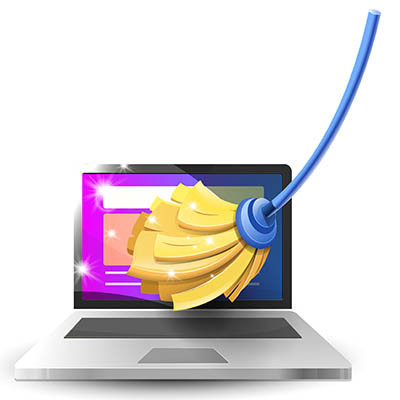When a hacker tries to access one of your accounts, the first challenge they must overcome is the password. This is why industry professionals always encourage you to create them with security in mind. The latest guidelines issued by the National Institute of Standards and Technology, or NIST, are not quite conventional or traditional, but they do give valuable insights into how to create more secure passwords.
IT Wurks Blog
If there’s any technology that has received hype in recent months, 5G connectivity has to at least be a contender for the most anticipated. The fifth generation of wireless connectivity is staged to benefit society and business alike through improved automation—particularly with the concurrent growth of the Internet of Things helping to develop the next iteration of the economy. Let’s consider how 5G is shaping up, and the impacts that it will likely have in the future.
Artificial intelligence has taken the world by storm, and with recent improvements to automated technology and machine learning, it should be clear that this technology is not going anywhere anytime soon. With proper implementation, artificial intelligence can help your business cut costs, improve operations, and mitigate unnecessary or repetitive tasks, all of which compounds to create a smoother and more manageable workload for your employees.
It’s a bit of a nightmare scenario for a business, born of watching too many crime thrillers: a criminal syndicate hacks into their systems, wreaking havoc and stealing all their data, while also destroying that company’s reputation. Is this scenario a fantasy? To a point, yes—but not so much as you might think.
It’s often said that a clean workspace is a safe workplace. When your workspace is mostly your computer, safety has less to do with it, but that shouldn’t deter you from doing what you can to keep your computer clean. It can help keep it in working order, longer, and is just a sanitary thing to do. Let’s get into why a clean computer is better, and how to go about cleaning your workstation.
Small businesses face a lot of risks, one obvious one being the threat of potential cybercrime and how its influence can impact their businesses. Let’s consider how these influences have taken shape, and the challenges that small and medium-sized businesses must now face as a result.
2020 offered no shortage of challenges for healthcare providers. Besides the obvious issues that COVID-19 posed to the operations, finances, and supply chains that these organizations rely on, cybersecurity issues have played a significant role. Let’s go over some of the security stresses that healthcare providers have been experiencing.
The laptop has been gradually seeing a boom in the office, replacing the desktop for a more portable option for meetings and remote work. Long gone are the days where the laptop feels like a more expensive, less capable option. They do have their detriments, though. One of the most complained about parts of using a laptop is the trackpad. They’ve added features and improved materials over the years, but the overall experience of using a trackpad hasn’t changed very much for over a decade.
For many businesses, keeping on top of their inventory is crucial to the profitability of their operations. Inventory management thus becomes incredibly important. Today there are tools being developed that can make managing your inventory and supply chain easier and more efficient. Let’s take a look at three tools that can help you manage your inventory more effectively.
When you have a thorough and powerful data backup strategy in place at your business, you are protecting your operations, your employees, and your customers from an array of terrible scenarios. Unfortunately, many businesses don’t think of data loss in the terms it should be considered in, a complete travesty. Today, we thought we would briefly describe the long and short of data backup and recovery practices that can put your business in a position to secure and restore your data should it be corrupted, destroyed, or stolen.
The productivity software suites now available to businesses have come a long way in a relatively very short time. However, when selecting one, it is still crucial to compare your options based on a few key variables. Let’s go over these variables to make sure that the software suite you’re using is the right one for your needs.
Large, medium-size, and especially small businesses are facing some difficult times at this point—and for them to make it through this and flourish in the future, some long-term changes are going to be necessary. Let’s break down a few ways that technology should play a role in these changes.
Your privacy on the Internet matters, even if you don’t think you have anything to hide. Over the last few years, this has become more and more evident as we watch tech giants profit off of understanding the people who use their services. Facebook, Amazon, and Google are among them. Google in particular has made some recent policy changes that are worth understanding.
Microsoft Word offers a variety of handy capabilities that could potentially save users a lot of time—including the means to replicate text across multiple documents, down to the formatting. In doing so, you can edit the text in one place to edit all instances of it simultaneously. Let’s go over how to accomplish this.
People look at their work differently, just as they view their lives differently. The many different perspectives of your staff brings a bit of variance of how they view data security. This isn’t so good for your business as you need to trust them to prioritize the security of your data and infrastructure. Let’s take a look at some of the best practices that you should be training your staff in, which will allow them to protect your data better, and theirs.
Revenue generation is the name of the game for businesses. That’s why the decisions they make with their available capital are really important. SMBs especially need to have a rapid and noticeable return on their investments if they want to keep pace. To that end, technology is one investment that can provide that kind of fast ROI. Here are three ways you can use technology to benefit your business.
Bad news—thanks to four flaws in Microsoft Exchange Server software, over 60,000 individuals and organizations have had their emails stolen by a cyberespionage unit based in China, with over 30,000 of those targeted being in the United States. Let’s review what has taken place up to the time of this writing, and what can be done about it.
The most successful businesses are those that are always seeking to improve what they offer—oftentimes, taking a successful element and simply making it more efficient to deliver. In the past, this basically meant that businesses needed to have their employees work more quickly. However, today’s improved technology and the automation that it makes possible have delivered a much more consistent option.
When you think of human resources (HR), you may not consider them the most essential part of your organization, but they have a lot of responsibilities. They coordinate a lot of the administrative issues of a business. They handle the onboarding, recruiting, and offboarding of workers. They handle payroll and sometimes, in smaller organizations, they do much, much more. With everything that needs to be done, it can be a real grind, but it doesn’t have to be. Today, we take a look at how new technology can improve your organization’s HR effectiveness.
Have you ever listened to someone talk about something that they really have a good handle on? One of two things will happen. First, their language will be filled to bursting with buzzwords and jargon that—while they clearly know what it all means—is confusing for a layperson. We can be guilty of this ourselves, so we wanted to take a few moments to take the second option and discuss what they mean in more common terms… and, despite how others may use them, what they don’t.








































